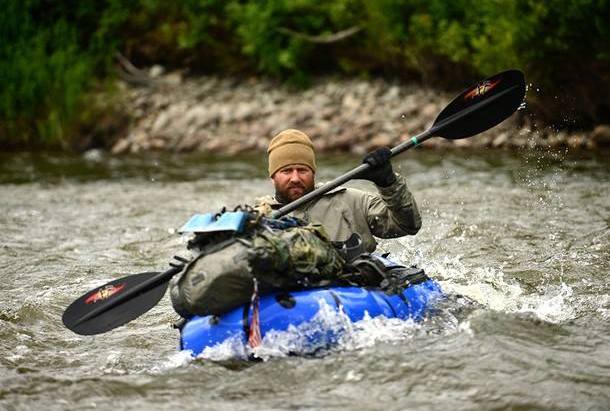How to Best Handle Wind and Current when on the Water

Maybe the weather changed while you were out on the water. Maybe you didn’t check the forecast ahead of time and now find yourself in high winds. Maybe you didn’t know about currents in the body of water you’re on.
So, first of all—know the waters you’ll paddle and check the forecast before you head out! That’s important for your enjoyment, but also for your safety!
Then…
Know Your Skill Level
Wind, waves and current all produce conditions you may or may not be able to handle.
If you’re an experienced paddler, then you’ll probably look at these natural elements as a fun challenge! But if you’re a beginner or have done most of your paddling in calm and sheltered waters, there are some things you need to learn.
Watch this video from our friends at Paddle TV for a look at the challenges waves and wind produce:
Helpful Techniques in Strong Winds
Kayaks tend to weather-cock, or move into a headwind. To stay on course, you’ll use your body weight to lean or edge slightly. Touring kayaks have rudders to help you with that, too.
The stronger the wind, the more aggressive your paddle strokes will need to be. And you’ll likely need to vary your stroke pattern to keep your tracking as straight as you can. (There’s no law against paddling on one side as much as you need to!)
Take advantage of steering strokes and rudders from the stern, too, especially for sharper turns.
Sometimes you’ll find yourself focused so hard on your paddling that you look up and find yourself off-course. A technique to prevent this is ranging: Point your boat in the direction you want to go, then pick out an object in the distance where you’re headed. While you paddle, keep your eyes on that object instead of on the water around you or on your paddle.
It might seem simple, but it’ll get you there!
Strong Winds on Your SUP
Dealing with wind on a stand-up paddleboard is more challenging. Standing on the board instead of sitting low to the water adds a lot more wind resistance.
So one technique to help is to bend your body to stay lower. Even drop to your knees if you have to. Another technique is to keep your paddle strokes short and aggressive. If you do, it’ll be easier to keep your board tracking straight ahead.
Waves
No matter what kind of watercraft you paddle, having big waves come at you from the side means the least stability. You’re better off either heading into the waves or paddling with them.
If your destination means the waves will hit you broadside, then a zig-zag pattern (taking the waves at an angle instead) will give you more stability.
Paddling in Currents
Probably the most important thing to keep in mind with current is to know the waters you paddle. Whether it’s current in a river or tidal current along the ocean shore, you need to know what you’ll come up against and know whether you have the skill and experience to tackle it.
So research the waters before you put your boat in. Will there be rapids, and how big are they? Is the river rocky? Is there anything you’ll need to portage around, like waterfalls or dams?
Last, it’s really important to know your strokes and be able to maneuver your kayak or SUP well in easy conditions before tackling currents or heading into large, unprotected waters.
(Sources: How to Paddle Your Kayak in Wind; Paddling Into Wind (SUP); Kayaking River Currents)
What paddle questions can we help you with? Our Wisconsin-based customer service team is here to help you: 715-755-3405 • sales@aquabound.com
More for you…






